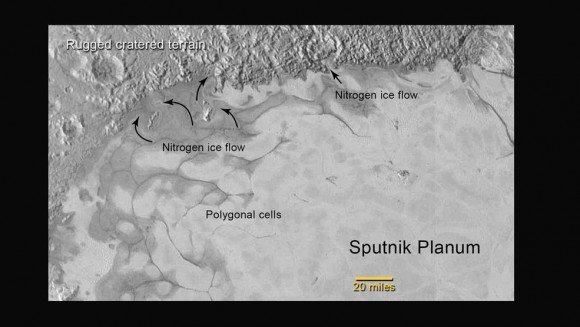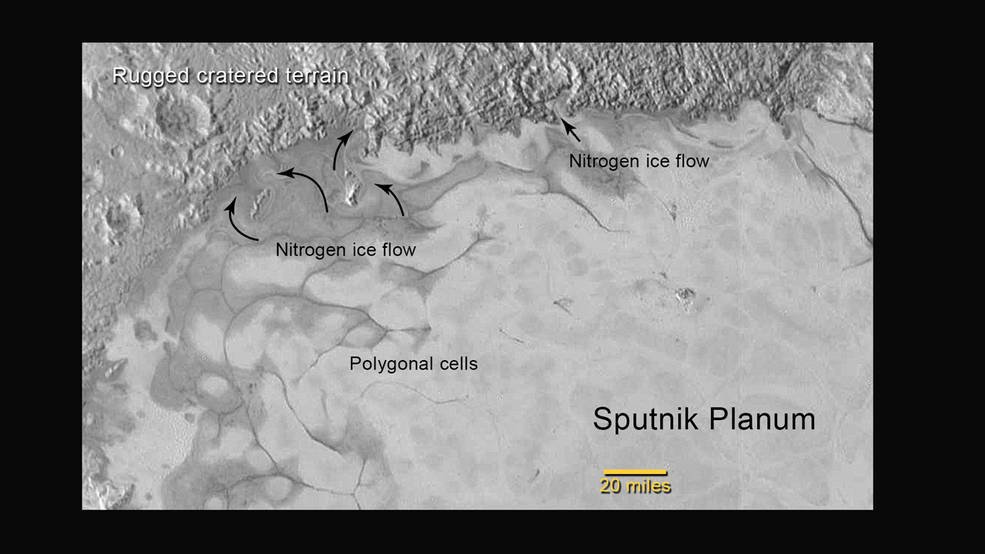Literature
Flowing ice on Pluto a sign of past life?

Washington, July 25
After spotting stunning
mountain ranges on Pluto, NASA's New Horizons mission has now found
evidence of exotic ice flowing across Pluto's surface and a surprising
extended haze - a phenomenon only seen on active worlds like Earth and
Mars.
In the northern region of Pluto’s Sputnik Planum,
swirl-shaped patterns of light and dark suggest that a surface layer of
exotic ices has flowed around obstacles and into depressions, much like
glaciers on Earth.
“With flowing ices, exotic surface chemistry,
mountain ranges and vast haze, Pluto is showing a diversity of planetary
geology that is truly thrilling,†said John Grunsfeld, NASA's associate
administrator for the Science Mission Directorate, in a statement.
The
new images show fascinating details within the Texas-sized plain,
informally named Sputnik Planum, which lies within the western half of
Pluto's heart-shaped feature, known as Tombaugh Regio.
There, a sheet of ice clearly appears to have flowed -- and may still be flowing -- in a manner similar to glaciers on Earth.
Additionally, new data indicates the centre of Sputnik Planum is rich in nitrogen, carbon monoxide and methane ices.
The
Long Range Reconnaissance Imager (LORRI) on board New Horizons also
captured sunlight streaming through the atmosphere and revealing hazes
as high as 130 kms above Pluto's surface.
A preliminary analysis
of the image shows two distinct layers of haze -- one about 80 kms above
the surface and the other at an altitude of about 50 kms.
"The
hazes detected in this image are a key element in creating the complex
hydrocarbon compounds that give Pluto's surface its reddish hue," added
Michael Summers, New Horizons co-investigator at George Mason University
in Fairfax, Virginia.
Models suggest the hazes form when
ultraviolet sunlight breaks up methane gas particles -- a simple
hydrocarbon in Pluto's atmosphere.
The breakdown of methane
triggers the buildup of more complex hydrocarbon gases, such as ethylene
and acetylene, which also were discovered in Pluto's atmosphere by New
Horizons.
As these hydrocarbons fall to the lower, colder parts of the atmosphere, they condense into ice particles that create the hazes.
Scientists
previously had calculated temperatures would be too warm for hazes to
form at altitudes higher than 30 kms above Pluto's surface.
"We are going to need some new ideas to figure out what's going on," Summers said.
The New Horizons mission will continue to send data stored in its onboard recorders back to Earth through late 2016.
The spacecraft currently is 12.2 million kms beyond Pluto, healthy and flying deeper into the Kuiper Belt.








































